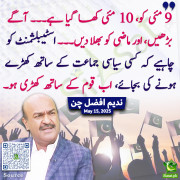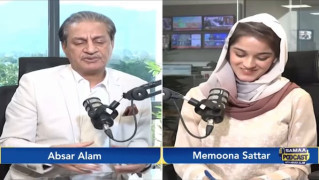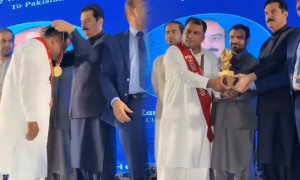RiazHaq
Senator (1k+ posts)
http://www.riazhaq.com/2017/01/comparing-median-income-wealth-data-for.html
Top 1% of Indians own 58% of wealth in India, according to a recent report by Oxfam as published by Wall Street Journal. The report said the global average for wealth ownership of the top 1% is 51%.
[TABLE="class: tr-caption-container"]
[TR]
[TD="align: center"] [/TD]
[/TD]
[/TR]
[TR]
[TD="class: tr-caption, align: center"]Source: Oxfam[/TD]
[/TR]
[/TABLE]
The income and wealth concentration in the hands of the richest top 1% skews the average per capita incomes and makes the material well-being of average citizen look better than it is. The best way to measure how well or poorly an average citizen is doing is to look at the median income and wealth, not the average or mean.
Median Incomes in South Asia:
Centre for Global Development has estimated 2014 median incomes of countries around the world. Here's what it reported for India and Pakistan:
Pakistan: Median Income per capita: $1204.50, Median Household Income: $6,022.50 Mean (Average) per capita $4,811.31
India Rural: Median per capita $930.75 Median Household $4,653.75 Mean (Average) per capita $5,700.72
India Urban: Median per capita $1295.75 Median Household $6,478.75 Mean(Average) per capita: $5,700.72
It shows that India's urban median income is slightly higher than Pakistan's median income. However, India's rural median income is significantly lower than Pakistan's. It should be noted that 70% of India's population lives in rural areas, much higher than Pakistan's 61%, according to the World Bank.
Median Wealth in South Asia:
Average Pakistani adult is 20% richer than an average Indian adult and the median wealth of a Pakistani adult is 120% higher than that of his or her Indian counterpart, according to Credit Suisse Wealth Report 2016. Average household wealth in Pakistan has grown 2.1% while it has declined 0.8% in India since the end of last year.
[TABLE="class: tr-caption-container, align: center"]
[TR]
[TD] [/TD]
[/TD]
[/TR]
[TR]
[TD="class: tr-caption"]Source: Credit Suisse Wealth Report 2016[/TD]
[/TR]
[/TABLE]
Here are the key statistics reported by Credit Suisse:
Total Household Wealth Mid-2016 :
India $3,099 billion Pakistan $524 billion
Wealth per adult:
India Year End 2000 Average $2,036 Median $498.00
Pakistan Year End 2000 Average $2,399 Median $1,025
India Mid-2016 Average $3,835 Median $608
Pakistan Mid-2016 Average $4,595 Median $1,788
Average wealth per adult in Pakistan is $760 more than in India or about 20% higher.
Median wealth per adult in Pakistan is $1,180 more than in India or about 120% higher
Summary:
The income and wealth concentration in the hands of the richest top 1% skews the average per capita incomes and makes the material well-being of average citizen look better than it is. The best way to measure how well or poorly an average citizen is doing is to look at the median income and wealth, not the average or mean. Median income and wealth figures in South Asia show that average Pakistanis are better off economically than their counterparts in India.
http://www.riazhaq.com/2017/01/comparing-median-income-wealth-data-for.html
Top 1% of Indians own 58% of wealth in India, according to a recent report by Oxfam as published by Wall Street Journal. The report said the global average for wealth ownership of the top 1% is 51%.
[TABLE="class: tr-caption-container"]
[TR]
[TD="align: center"]
 [/TD]
[/TD][/TR]
[TR]
[TD="class: tr-caption, align: center"]Source: Oxfam[/TD]
[/TR]
[/TABLE]
The income and wealth concentration in the hands of the richest top 1% skews the average per capita incomes and makes the material well-being of average citizen look better than it is. The best way to measure how well or poorly an average citizen is doing is to look at the median income and wealth, not the average or mean.
Median Incomes in South Asia:
Centre for Global Development has estimated 2014 median incomes of countries around the world. Here's what it reported for India and Pakistan:
Pakistan: Median Income per capita: $1204.50, Median Household Income: $6,022.50 Mean (Average) per capita $4,811.31
India Rural: Median per capita $930.75 Median Household $4,653.75 Mean (Average) per capita $5,700.72
India Urban: Median per capita $1295.75 Median Household $6,478.75 Mean(Average) per capita: $5,700.72
It shows that India's urban median income is slightly higher than Pakistan's median income. However, India's rural median income is significantly lower than Pakistan's. It should be noted that 70% of India's population lives in rural areas, much higher than Pakistan's 61%, according to the World Bank.
Median Wealth in South Asia:
Average Pakistani adult is 20% richer than an average Indian adult and the median wealth of a Pakistani adult is 120% higher than that of his or her Indian counterpart, according to Credit Suisse Wealth Report 2016. Average household wealth in Pakistan has grown 2.1% while it has declined 0.8% in India since the end of last year.
[TABLE="class: tr-caption-container, align: center"]
[TR]
[TD]
 [/TD]
[/TD][/TR]
[TR]
[TD="class: tr-caption"]Source: Credit Suisse Wealth Report 2016[/TD]
[/TR]
[/TABLE]
Here are the key statistics reported by Credit Suisse:
Total Household Wealth Mid-2016 :
India $3,099 billion Pakistan $524 billion
Wealth per adult:
India Year End 2000 Average $2,036 Median $498.00
Pakistan Year End 2000 Average $2,399 Median $1,025
India Mid-2016 Average $3,835 Median $608
Pakistan Mid-2016 Average $4,595 Median $1,788
Average wealth per adult in Pakistan is $760 more than in India or about 20% higher.
Median wealth per adult in Pakistan is $1,180 more than in India or about 120% higher
Summary:
The income and wealth concentration in the hands of the richest top 1% skews the average per capita incomes and makes the material well-being of average citizen look better than it is. The best way to measure how well or poorly an average citizen is doing is to look at the median income and wealth, not the average or mean. Median income and wealth figures in South Asia show that average Pakistanis are better off economically than their counterparts in India.
http://www.riazhaq.com/2017/01/comparing-median-income-wealth-data-for.html
























